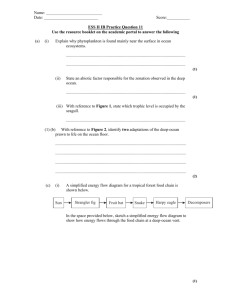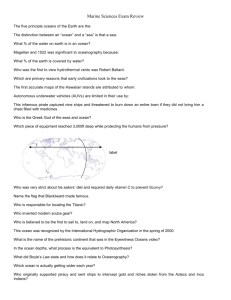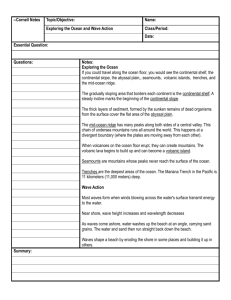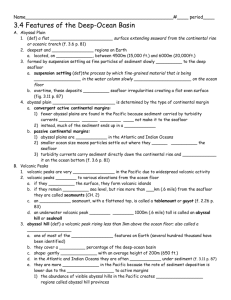Lesson 1 Earth`s Ocean and the Ocean Floor
advertisement
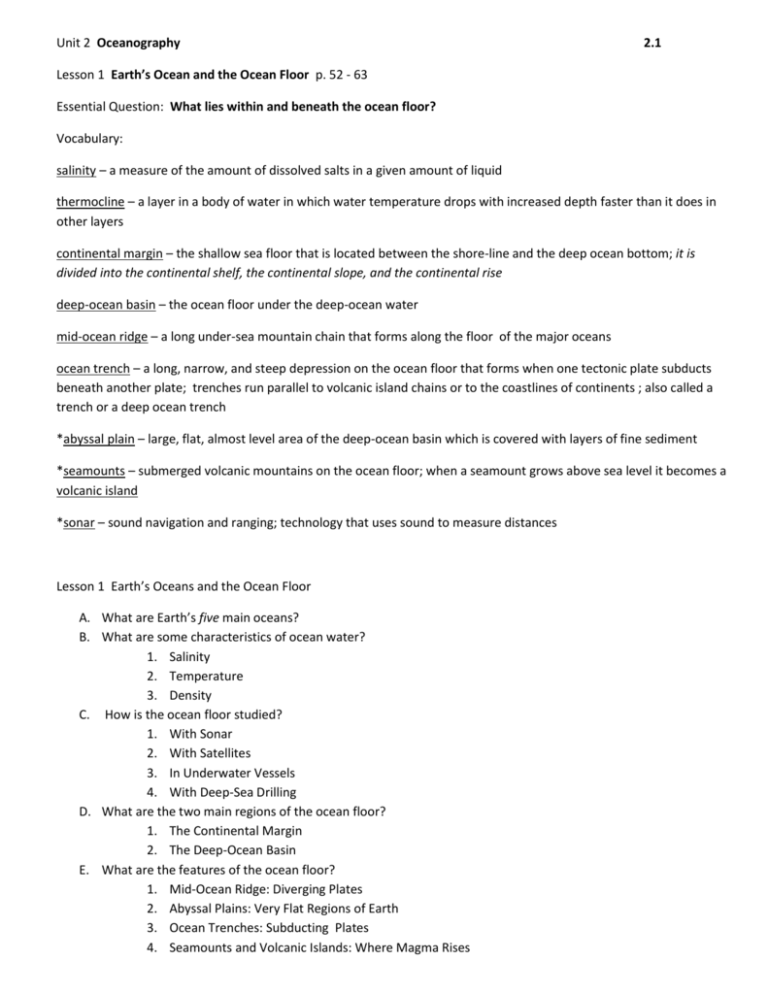
Unit 2 Oceanography 2.1 Lesson 1 Earth’s Ocean and the Ocean Floor p. 52 - 63 Essential Question: What lies within and beneath the ocean floor? Vocabulary: salinity – a measure of the amount of dissolved salts in a given amount of liquid thermocline – a layer in a body of water in which water temperature drops with increased depth faster than it does in other layers continental margin – the shallow sea floor that is located between the shore-line and the deep ocean bottom; it is divided into the continental shelf, the continental slope, and the continental rise deep-ocean basin – the ocean floor under the deep-ocean water mid-ocean ridge – a long under-sea mountain chain that forms along the floor of the major oceans ocean trench – a long, narrow, and steep depression on the ocean floor that forms when one tectonic plate subducts beneath another plate; trenches run parallel to volcanic island chains or to the coastlines of continents ; also called a trench or a deep ocean trench *abyssal plain – large, flat, almost level area of the deep-ocean basin which is covered with layers of fine sediment *seamounts – submerged volcanic mountains on the ocean floor; when a seamount grows above sea level it becomes a volcanic island *sonar – sound navigation and ranging; technology that uses sound to measure distances Lesson 1 Earth’s Oceans and the Ocean Floor A. What are Earth’s five main oceans? B. What are some characteristics of ocean water? 1. Salinity 2. Temperature 3. Density C. How is the ocean floor studied? 1. With Sonar 2. With Satellites 3. In Underwater Vessels 4. With Deep-Sea Drilling D. What are the two main regions of the ocean floor? 1. The Continental Margin 2. The Deep-Ocean Basin E. What are the features of the ocean floor? 1. Mid-Ocean Ridge: Diverging Plates 2. Abyssal Plains: Very Flat Regions of Earth 3. Ocean Trenches: Subducting Plates 4. Seamounts and Volcanic Islands: Where Magma Rises


